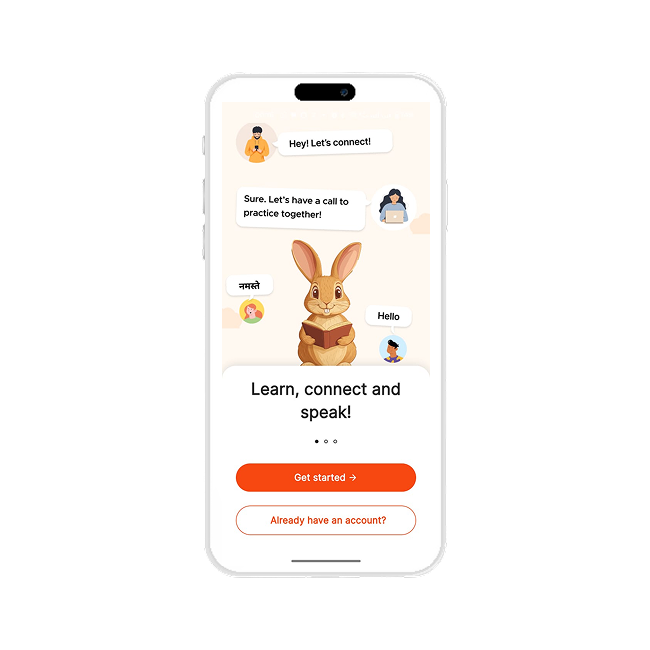Homophones in English are a fascinating aspect of the English language, often causing confusion for both new learners and native speakers. These are words that sound the same but have different meanings and are often spelled differently. While English learners may initially struggle with homophones, understanding them is crucial to mastering the language. This blog will provide an in-depth look at homophones, including examples, common mistakes, and a worksheet to practice. We will also address some frequently asked questions to help you navigate this tricky area of the language.
What Are Homophones?
Homophones are words that have the same pronunciation but differ in meaning and sometimes in spelling. These words can be tricky, especially because English speakers often rely on context to determine the intended word. In some cases, homophones are even spelled the same but differ in meaning, which are known as homographs (e.g., “lead” as a metal and “lead” as to guide). However, homophones are specifically words with the same pronunciation, regardless of their spelling.
Examples of Homophones
- Pair, Pear, and Pare
- Pair: Two items of the same kind, often used together (e.g., a pair of shoes).
- Pear: A type of fruit (e.g., I ate a pear for breakfast).
- Pare: To peel or trim (e.g., Pare the apple before eating it).
- To, Too, and Two
- To: A preposition used to indicate direction, place, or position (e.g., I’m going to the store).
- Too: An adverb meaning “also” or “excessively” (e.g., I want to go too / It’s too cold outside).
- Two: The number 2 (e.g., I have two dogs).
- There, Their, and They’re
- There: Refers to a place or location (e.g., She is over there).
- Their: A possessive pronoun indicating ownership (e.g., Their house is beautiful).
- They’re: A contraction of “they are” (e.g., They’re coming over for dinner).
- Brake and Break
- Brake: A device used for slowing or stopping (e.g., He applied the brake to stop the car).
- Break: To separate into pieces or stop functioning (e.g., I need a break from work).
- Flower and Flour
- Flower: A colorful part of a plant (e.g., She picked a flower).
- Flour: A powdery substance used in baking (e.g., I need flour to make the cake).
The Importance of Homophones in Writing
The proper use of homophones is essential for clear and accurate writing. Incorrect usage can alter the meaning of a sentence entirely, leading to confusion or miscommunication. Here are some reasons why it’s important to understand and use homophones correctly:
- Clarity in Communication: Homophones help you express your ideas clearly. Misusing them can make your writing sound unprofessional or careless.
- Avoiding Misunderstandings: Incorrect homophone use can lead to misunderstandings. For example, confusing “their” with “there” can change the meaning of a sentence.
- Improved Writing Skills: Knowing how to use homophones correctly enhances your overall writing, making it more polished and precise.
Common Mistakes with Homophones
Even proficient English speakers often make mistakes with homophones. Below are some common errors:
1. Its vs. It’s
- Its: A possessive form of “it” (e.g., The cat chased its tail).
- It’s: A contraction of “it is” or “it has” (e.g., It’s going to rain today).
Common Mistake: Many people confuse “its” and “it’s” because both involve the word “it.” The key to distinguishing them is understanding the role of the apostrophe: “it’s” always means “it is” or “it has,” while “its” shows possession.
2. Your vs. You’re
- Your: A possessive pronoun (e.g., Is this your book?).
- You’re: A contraction of “you are” (e.g., You’re going to love this movie).
Common Mistake: This is another case where the apostrophe indicates a contraction (“you’re” = “you are”), while “your” shows possession.
3. Accept vs. Except
- Accept: To receive or agree to something (e.g., I accept your invitation).
- Except: Excluding or leaving out (e.g., Everyone except John was invited).
Common Mistake: “Accept” and “except” are commonly mixed up due to their similar sounds, but they have very different meanings.
4. Whose vs. Who’s
- Whose: A possessive pronoun (e.g., Whose book is this?).
- Who’s: A contraction of “who is” or “who has” (e.g., Who’s coming to the party?).
Common Mistake: This is another mistake involving a possessive pronoun (“whose”) and a contraction (“who’s”). The apostrophe in “who’s” signifies “who is” or “who has.”
Homophones vs. Homonyms and Homographs: Understanding the Differences
The English language is full of fascinating word categories that often confuse learners, especially homophones, homonyms, and homographs. While these terms sound similar, they refer to distinct linguistic concepts.

Homophones: Words That Sound the Same
Homophones are words that have identical pronunciation but differ in meaning, spelling, or both.
- Examples:
- Flower (a plant part) and flour (used in baking).
- Their (possessive), there (a location), and they’re (they are).
Homophones are crucial for language learners as they require attention to context to avoid misuse in writing or speech.
Homonyms: Same Sound and Spelling, Different Meanings
Homonyms are words that are spelled and pronounced the same but have different meanings. They often rely entirely on context for clarification.
- Examples:
- Bat: Can refer to an animal or a piece of sports equipment.
- Bank: Refers to a financial institution or the side of a river.
Homonyms showcase the richness of language by allowing one word to carry multiple meanings depending on its usage.
Homographs: Same Spelling, Different Pronunciations and Meanings
Homographs are words that share the same spelling but differ in pronunciation, meaning, or both.
- Examples:
- Lead (to guide) and lead (a metal).
- Tear (a drop from the eye) and tear (to rip something).
Homographs can be particularly tricky because readers must rely on sentence structure and context to determine pronunciation and meaning.
Key Differences
| Category | Pronunciation | Spelling | Meaning | Examples |
| Homophones | Same | Different | Different | Flower, flour |
| Homonyms | Same | Same | Different | Bat, bank |
| Homographs | Different | Same | Different | Lead, tear |
Tricky Homophones to Watch Out For
The English language is rich with homophones words, which are pairs or sets of words that sound alike but differ in meaning and spelling. While these enhance the language’s complexity and beauty, they can also cause confusion if not used correctly. Understanding and mastering tricky homophones is essential for effective communication. Below are some challenging homophones examples to help you avoid common pitfalls.
1. Would and Wood
A classic example is the homophone of would and wood. Would is a modal verb used to indicate possibility or intent, as in, “I would like some coffee.” On the other hand, wood refers to the material from trees, as in, “This chair is made of wood.” Despite their similar pronunciation, their meanings and usage are entirely different.
2. Their, There, and They’re
This trio of homophones words is notorious for causing errors. Their is a possessive pronoun, such as, “This is their house.” There refers to a location, as in, “The keys are over there.” They’re is a contraction of “they are,” as in, “They’re going to the park.” Always pay attention to context to determine the correct word.
3. To, Two, and Too
These homophones examples are often confused in both writing and speaking. To is a preposition, as in, “We’re going to the market.” Two is a number, as in, “She has two apples.” Too means “also” or “excessively,” such as, “I want to go too” or “That’s too much.”
4. Bare and Bear
Another challenging pair is bare and bear. Bare means uncovered or naked, as in, “He walked on the bare ground.” Bear, however, refers to the animal or enduring something, as in, “The bear is sleeping” or “I can’t bear the pain.”
5. Right and Write
These homophones words are straightforward yet commonly misused. Right refers to correctness or direction, as in, “You are right” or “Turn right.” Write means to compose words, such as, “Please write a letter.”
6. Principle and Principal
This pair can trip up even advanced learners. Principle refers to a fundamental truth or belief, as in, “Honesty is a key principle.” Principal is used to describe the head of a school or something of primary importance, like, “The school principal gave a speech.”
7. Stationary and Stationery
While these two words sound alike, their meanings are distinct. Stationary means immobile, as in, “The car remained stationary.” Stationery refers to office or writing supplies, such as, “She bought some beautiful stationery.”
8. Affect and Effect
A tricky pair in writing, affect is typically a verb meaning to influence, as in, “The weather will affect our plans.” Effect is a noun referring to the result of an action, such as, “The new policy had a positive effect.”
9. Flour and Flower
These homophones examples illustrate the stark difference between meanings despite sounding the same. Flour is used in baking, as in, “She added flour to the batter.” Flower is a bloom, as in, “The flower garden is beautiful.”
10. Sight, Site, and Cite
This trio can confuse writers. Sight refers to the ability to see, as in, “His sight is excellent.” Site means a location, such as, “This is the site of the project.” Cite is a verb used to reference, as in, “Cite your sources in the essay.”
How to Avoid Mistakes
To master homophones words, focus on understanding their meanings through examples and practice. Use tools like dictionaries or language apps to clarify doubts. Writing sentences with each homophone pair is an effective way to retain their meanings. Reading regularly also helps you encounter these words in context, reinforcing their proper usage.
Homophones add richness to the language but demand precision. By understanding these tricky homophones examples, you can improve your writing and speaking skills, ensuring your communication is both clear and impactful.
Fun with Homophones: A Worksheet
Here’s a worksheet to help reinforce your understanding of homophones. Fill in the blanks with the correct homophone from the choices provided.
- I went to the store to buy some ______ (flour/flower).
- She was feeling ______ (bare/bear) after the long hike.
- The children are playing ______ (their/there/they’re) toys in the garden.
- ______ (Its/It’s) really important to be on time.
- The ______ (brake/break) in my car needs to be fixed.
- I will have ______ (two/to/too) pieces of cake, please.
- He is the ______ (wright/right/rite) person for the job.
- The weather is ______ (so/sew) nice today.
- I love ______ (peace/piece) and quiet in the mornings.
- The teacher asked ______ (who’s/whose) pencil was on the desk.
Answer Key:
- Flour
- Bare
- Their
- It’s
- Brake
- Two
- Right
- So
- Peace
- Whose
Conclusion
Homophones are an essential part of the English language, offering both challenges and opportunities for learners. By understanding their meanings, spelling, and correct usage, you can enhance your communication skills and avoid common pitfalls in writing and speaking. Practice using homophones in context, and be mindful of common mistakes to ensure you’re using them correctly. Mastering homophones will become second nature with continued practice, improving your English fluency.
You can also try one of our Official Application ENGLISHBHASHI available in Play Store with which you can refine your English Skills we assure you that you will be able to speak English much better in just 30 Days.
Share this post with your friends and family who are eager to enhance their English skills. Let’s inspire and empower each other on this incredible language-learning path. Together, we can achieve greatness! So, what are you waiting for? Visit EnglishBhashi today and embark on an exciting adventure of language learning.
FAQs for Homophones in English
How can I improve my understanding of homophones?
Improving your understanding of homophones involves practice, reading, and paying attention to context. Reading books, articles, and listening to native speakers will help you become familiar with how homophones are used in different situations. You can also use online tools, such as grammar checkers, to spot potential errors.
Are homophones the same as homonyms?
No, homophones are different from homonyms. While homophones sound the same but have different meanings and often different spellings, homonyms are words that share the same spelling and pronunciation but have different meanings (e.g., "bat" meaning a flying mammal and "bat" meaning a piece of sports equipment). Homophones only differ in meaning and possibly in spelling.
Can homophones have the same spelling?
Yes, some homophones have the same spelling. These are known as homographs. For example: Lead (to guide) vs. Lead (a type of metal).
Why is it important to learn homophones in English?
Learning homophones is important because they can greatly impact your writing and speaking accuracy. They help avoid misunderstandings and ensure that you’re using the right word for the right situation. Mastering homophones also helps enhance your overall command of the English language.
Are homophones common in other languages as well?
Homophones exist in other languages, but the frequency and complexity can vary. Many languages have words that sound the same but differ in meaning, though they might be less common or less problematic due to less reliance on spelling and pronunciation rules like in English.
Can I use a homophone incorrectly and still be understood?
While native speakers may understand a sentence with a homophone error due to context, it's best to use homophones correctly to avoid confusion. For example, mixing up "they're" and "their" might cause your meaning to be unclear in certain contexts.


